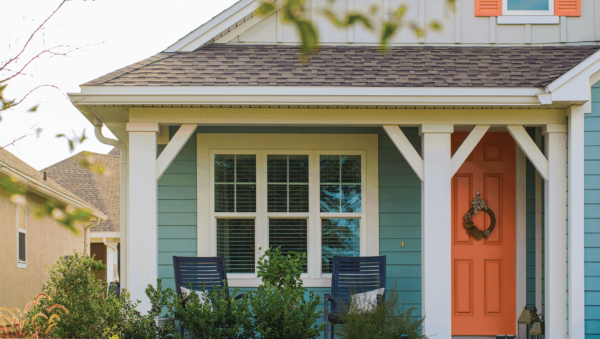A window sash serves as a fundamental component of the anatomy of a window, playing a crucial role in its overall structure and functionality. The window sash is the part of the window that holds the glass panels securely in place. It consists of the vertical and horizontal frames that surround and support the glass.
Not only does the window sash contribute to the window’s aesthetic appeal, but it also plays a pivotal role in ensuring the window’s stability and durability. By providing structural support and stability, the window sash allows for smooth operation, enabling the window to open, close, and lock properly.
Moreover, the design of the window sash significantly impacts the window’s energy efficiency and insulation properties. A well-maintained and properly sealed window sash helps to prevent drafts, minimize heat loss or gain, and enhance the overall comfort of your living space.
Understanding the role and importance of the window sash is essential for homeowners as it enables them to make informed decisions regarding maintenance, repairs, or upgrades to their windows. By recognizing the significance of this integral component, homeowners can ensure the longevity, functionality, and aesthetic appeal of their windows for years to come.
What is a Sash?
A window sash refers to the specific part of a window that holds the glass panes in place. It consists of the framework or frames, typically made of wood, vinyl, or metal, that surround and secure the glass within the window structure.
The window sash can be categorized into two types: the inner sash and the outer sash. In the case of double-hung windows, the inner sash is the movable part that can be raised or lowered, allowing for ventilation. The outer sash, however, remains fixed and provides structural support to the window.
Why are Window Sashes Important?
The primary function of the window sash is to provide stability and structural integrity to the window assembly. It ensures that the glass panes are held securely in place, preventing them from shifting or falling out. The sash also plays a role in weatherproofing by creating a barrier against drafts, moisture, and external elements.
Additionally, the window sash contributes to the overall appearance and style of the window. It can feature assorted designs, such as divided light patterns, which add visual interest and architectural charm to the window.
Understanding the concept of a window sash is essential for homeowners, as it helps them comprehend the components of their windows and make informed decisions regarding maintenance, repairs, or replacement if necessary.
What Part of the Window is the Sash?
A window sash typically consists of a framework that surrounds and supports the glass panels within a window. Its appearance may vary depending on the specific window design and materials used. Here is a general description of the typical look of a window sash:
- Vertical and Horizontal Frames: The sash is comprised of vertical and horizontal frames that create a perimeter around the glass. These frames are commonly made of wood, vinyl, or metal. The vertical frame, known as the stile, runs along the sides of the window, while the horizontal frame, called the rail, is at the top and bottom.
- Muntins or Dividers: In some window sashes, especially those with a traditional or decorative style, muntins or dividers are incorporated. Muntins are the bars that divide the glass into smaller sections, creating a pattern or grid-like appearance. They can be placed horizontally, vertically, or in a combination of both, depending on the desired aesthetic.
- Glass Panes: The sash holds the glass panes in place, which are usually transparent or translucent. The number of glass panes can vary, with single-pane, double-pane, or even triple-pane configurations, each offering distinct levels of insulation and energy efficiency.
- Hardware and Accessories: The sash may also include various hardware components and accessories. This can include locks, latches, handles, hinges, or other mechanisms that allow for the operation and secure closing of the window.
The specific design and appearance of a window sash can vary based on architectural styles, window types (such as single-hung, double-hung, casement, or sliding windows), and personal preferences. From traditional and ornate to sleek and modern, window sashes can be customized to complement the overall aesthetics of the building or room.
When should Window Sashes be Replaced?
Knowing when to replace window sashes is crucial for maintaining the functionality and appearance of your windows. Several indicators suggest it may be time for a replacement. Firstly, if your window sashes exhibit considerable damage, such as rot, warping, or cracking, it is a clear indication that replacement is necessary. Damaged sashes not only compromise the structural integrity of the window but can also lead to air and water leaks, reducing energy efficiency and causing potential moisture-related issues. Additionally, if the sashes are beyond repair or if repairs would be costly and impractical, considering a window replacement will become a more sensible option.
Furthermore, outdated or worn-out window sashes may lack proper insulation properties, resulting in drafts, increased energy consumption, and uncomfortable indoor temperatures. Upgrading to newer, energy-efficient sashes or completely new windows can significantly enhance the insulation of your windows, leading to energy savings and improved comfort.
Consider the overall appearance of your window sashes as well. If they appear outdated, faded, or no longer align with your desired aesthetic, replacing them can give your windows a fresh, updated look.
Is a Window Sash Replacement Right for You?
Are your windows getting old and damaged? Have you noticed drafts, moisture, or high energy bills? If so, it may be time to consider a window sash replacement. A window sash replacement may only be necessary if they are beginning to fail or look outdated within only the first few years. If you are windows above the age of 10 years old and are experiencing high energy bills or drafts, you may want to consider an entire window replacement. This may be the more cost-effective option compared to a sash replacement.
While replacing just the sash can be a viable solution, it is important to evaluate the overall condition of your windows and consider the long-term benefits of a full window replacement. Newer windows are typically more energy-efficient and can provide better insulation, resulting in significant energy savings and improved indoor comfort. Additionally, a full window replacement allows for more customizable options in terms of design and features, such as improved security features or soundproofing capabilities.
Contact DaBella for Your Next Window Replacement?
When it comes to replacing window sashes or the entire window, it is important to weigh the costs and benefits. A sash replacement can be a cost-effective solution if your window frames are still in good condition, and you want to upgrade the look and insulation properties of the sashes. However, if your windows are old and deteriorated, replacing the entire window may be a better long-term investment. DaBella can help you evaluate your options and make the best decision for your home and budget.
DaBella is the window replacement expert with our own line of Glasswing vinyl replacement windows. You can always count on our team to provide expert guidance on which window replacement option may be best for you. When it comes to improving the energy efficiency and overall appearance of your home, DaBella has the knowledge and experience you can rely on. So why wait any longer? Schedule a consultation today and see how our Glasswing vinyl windows can transform your home.

